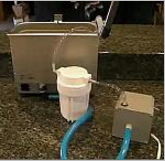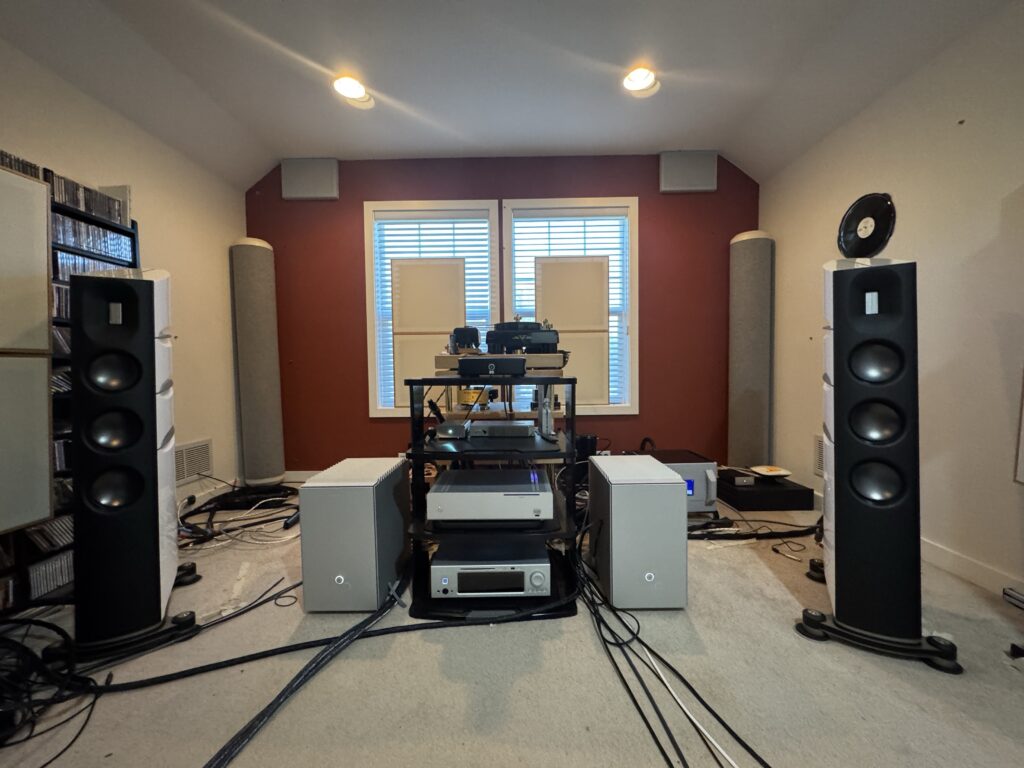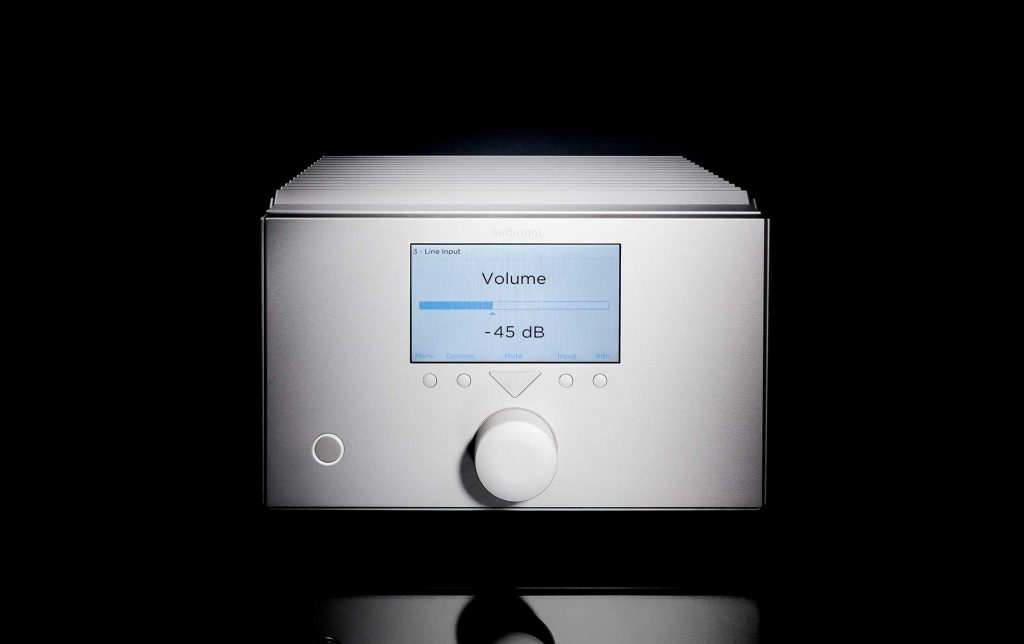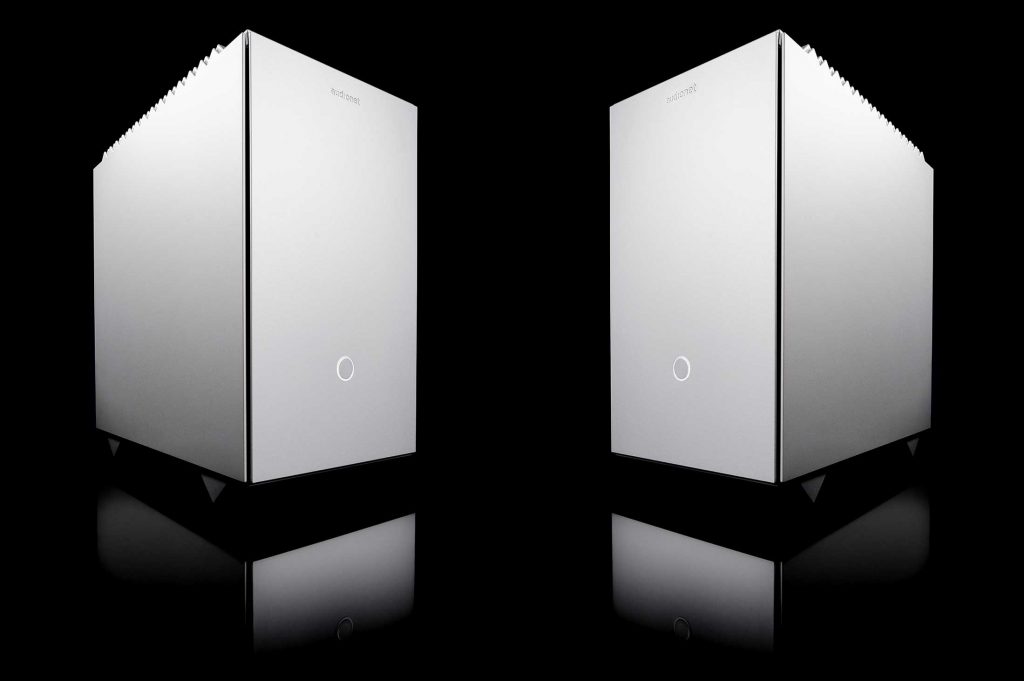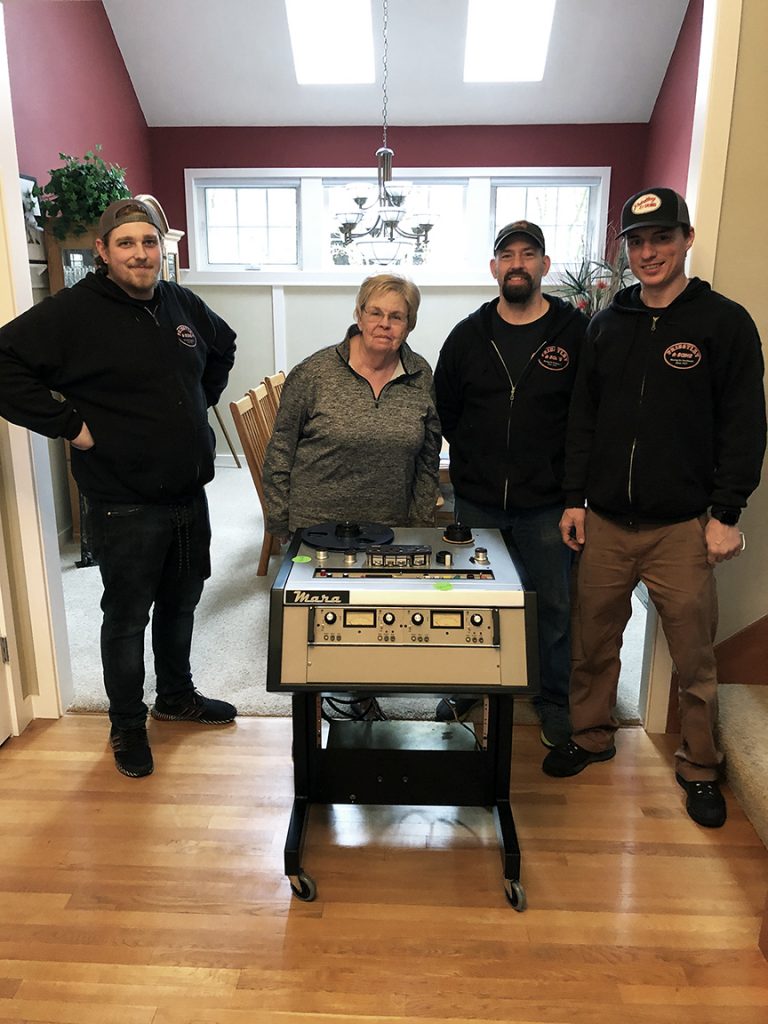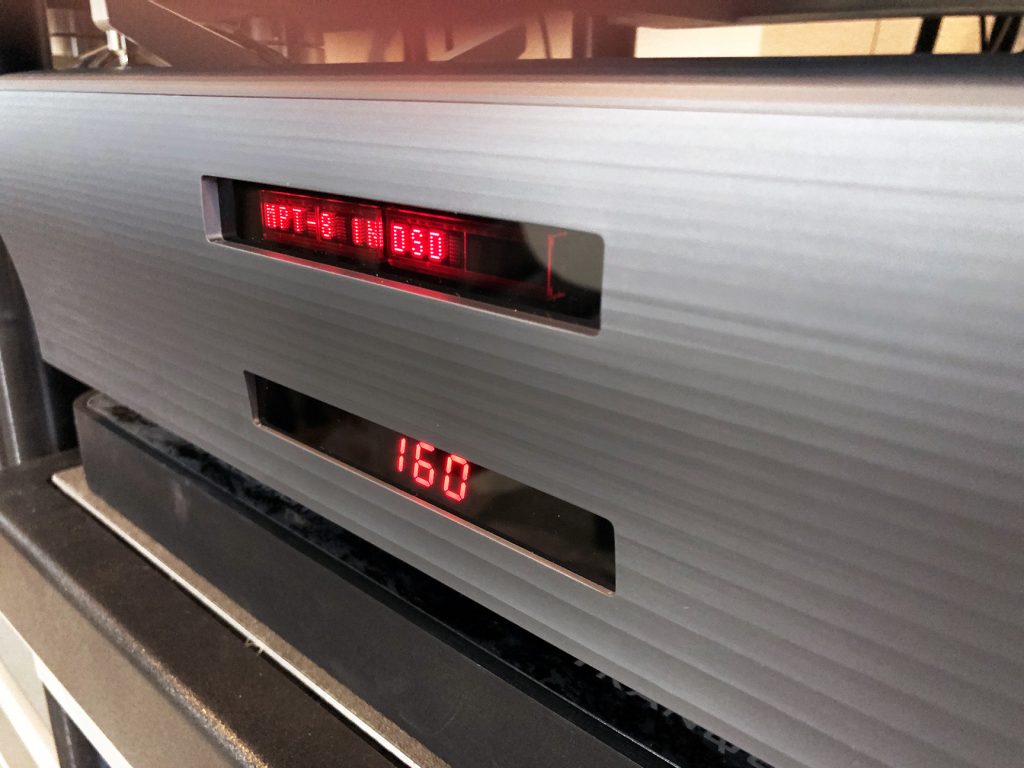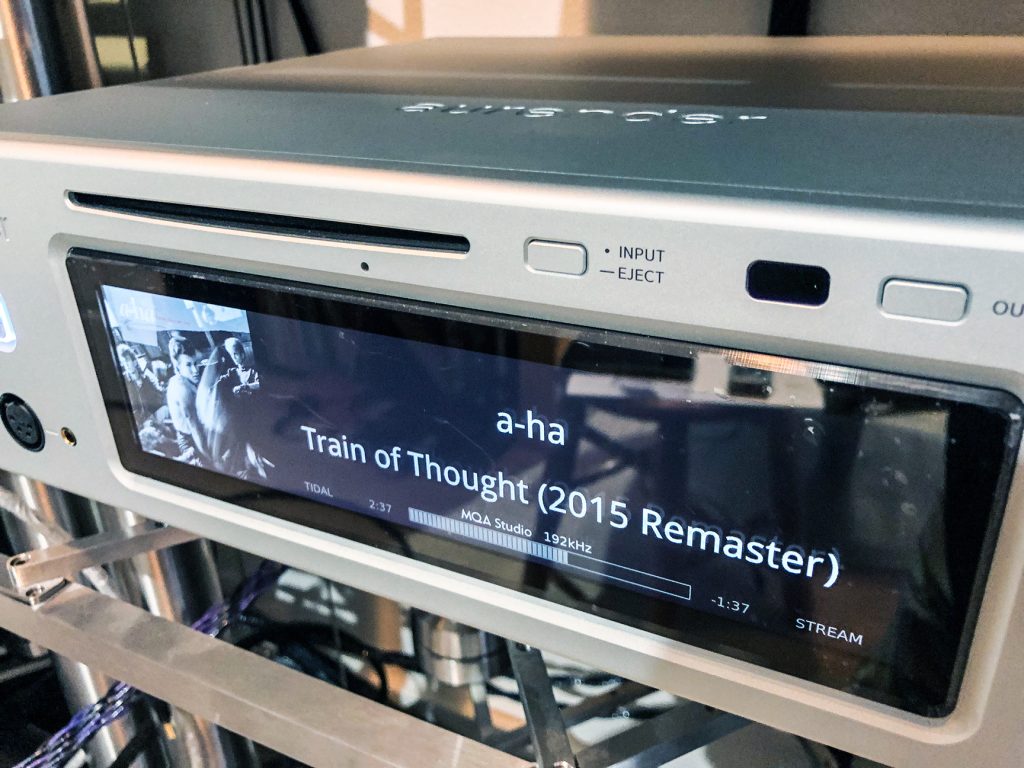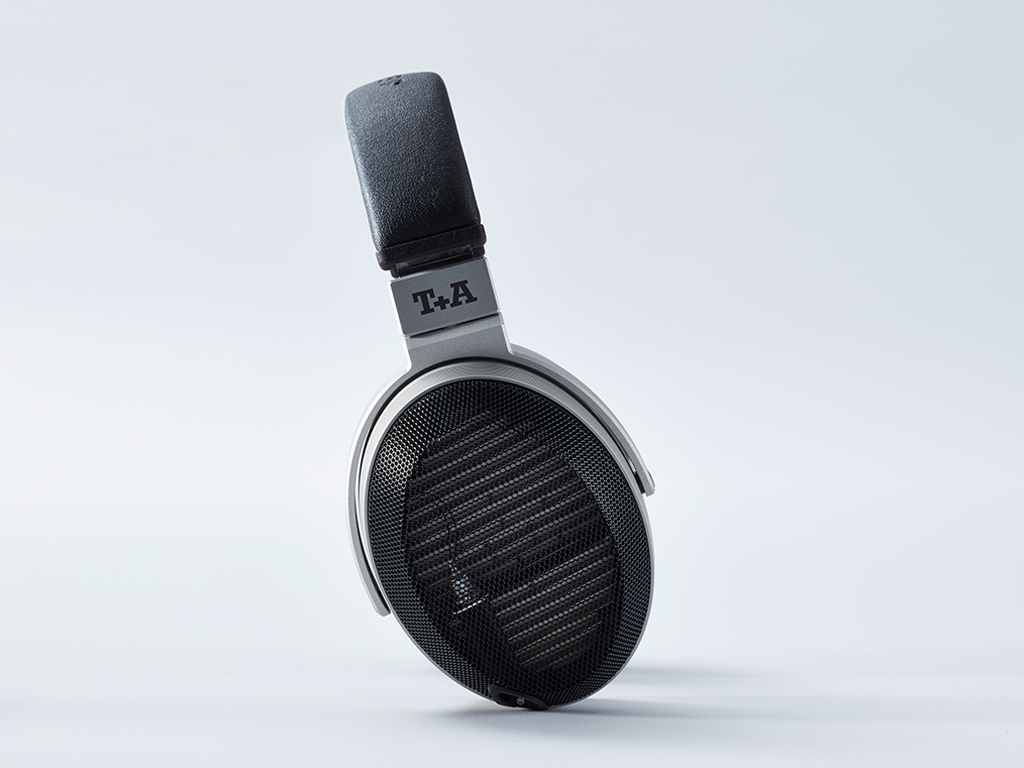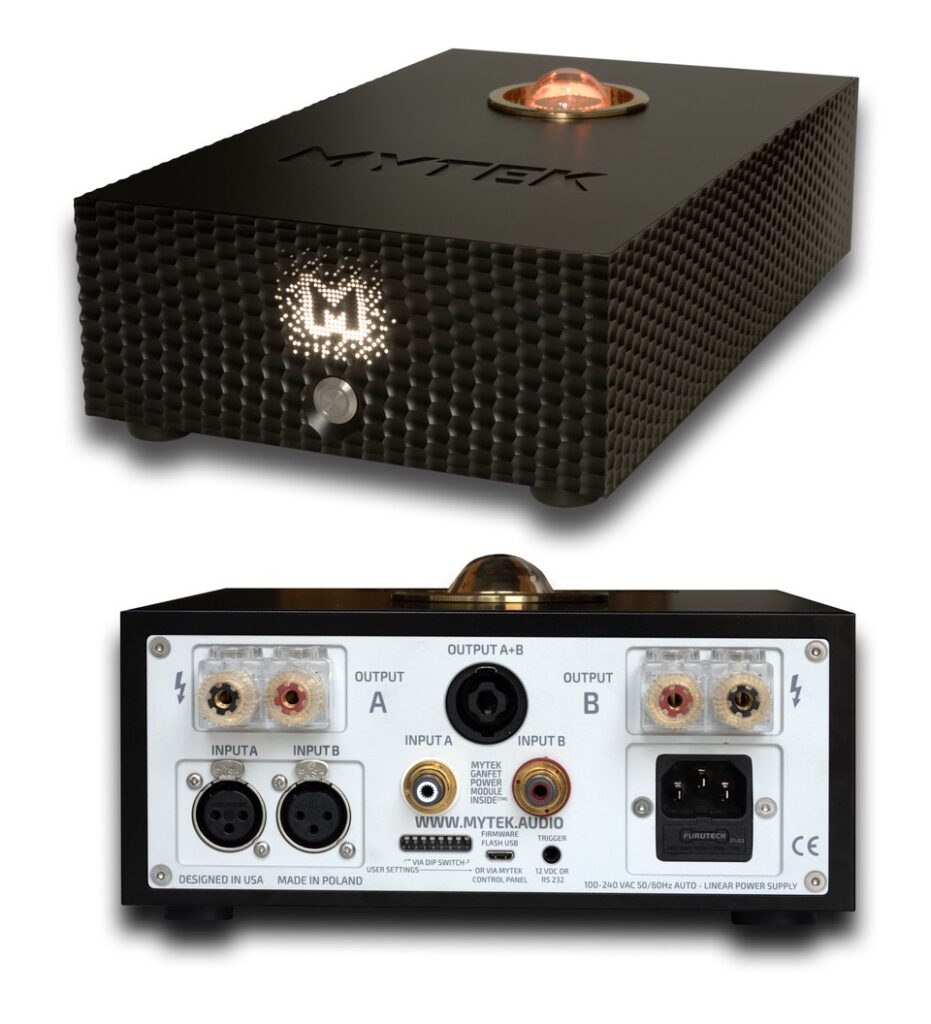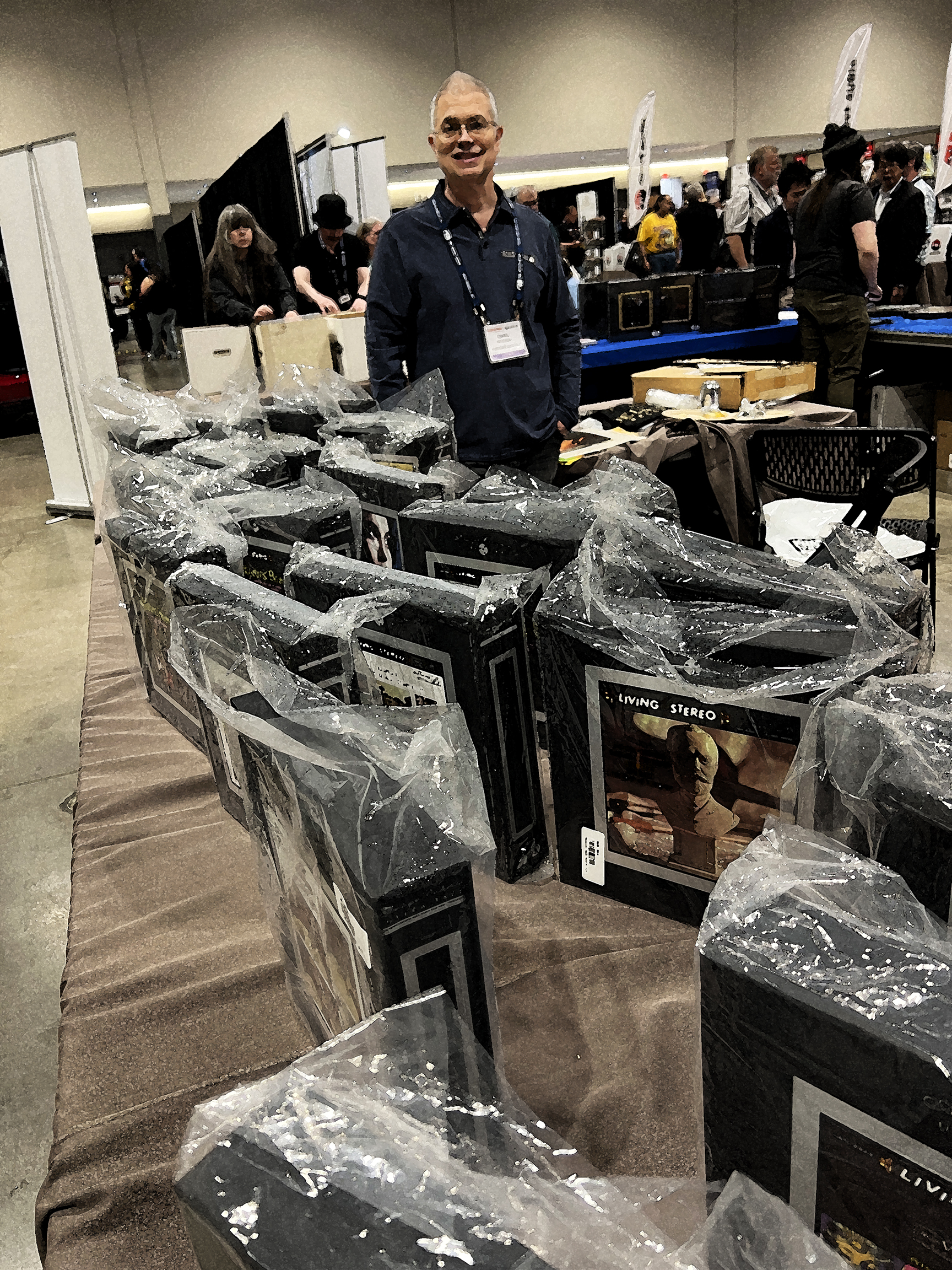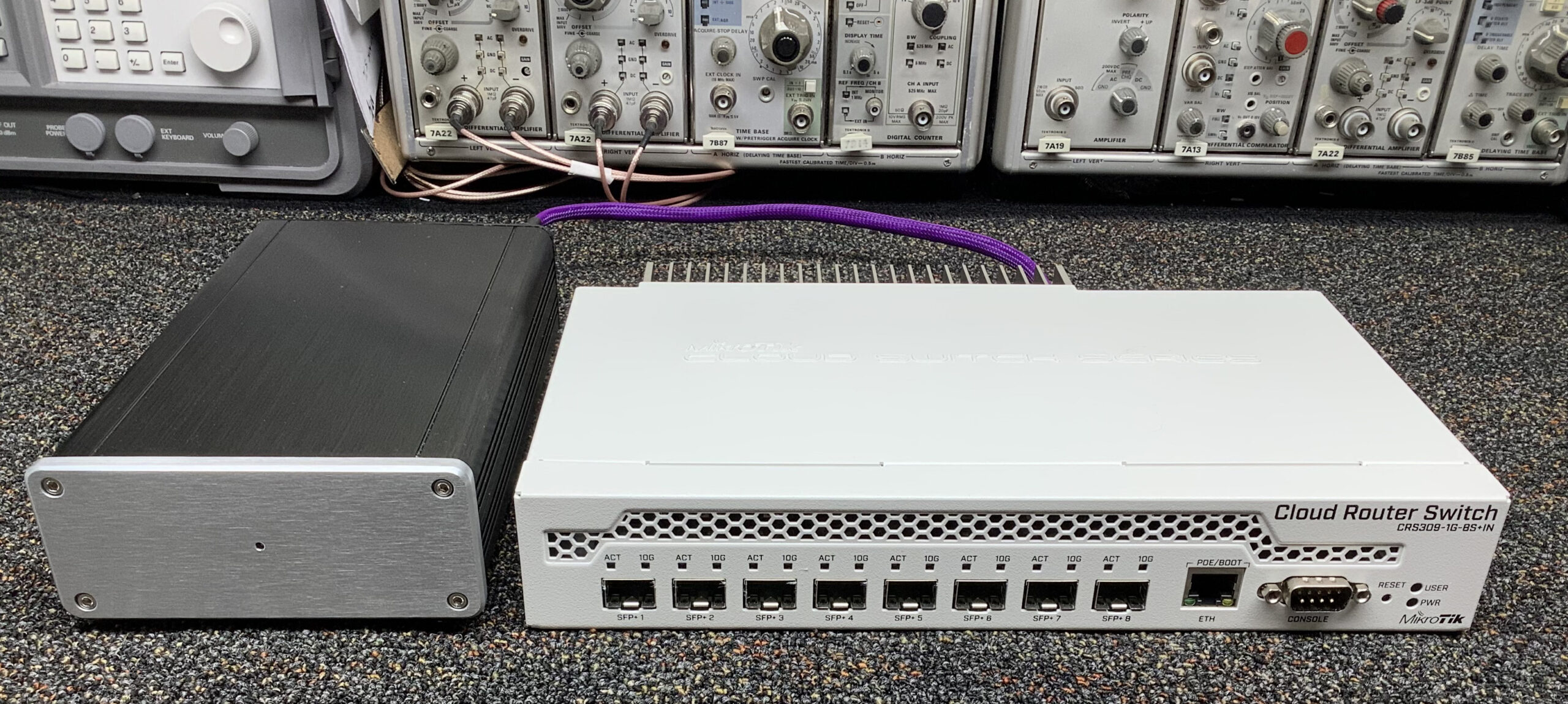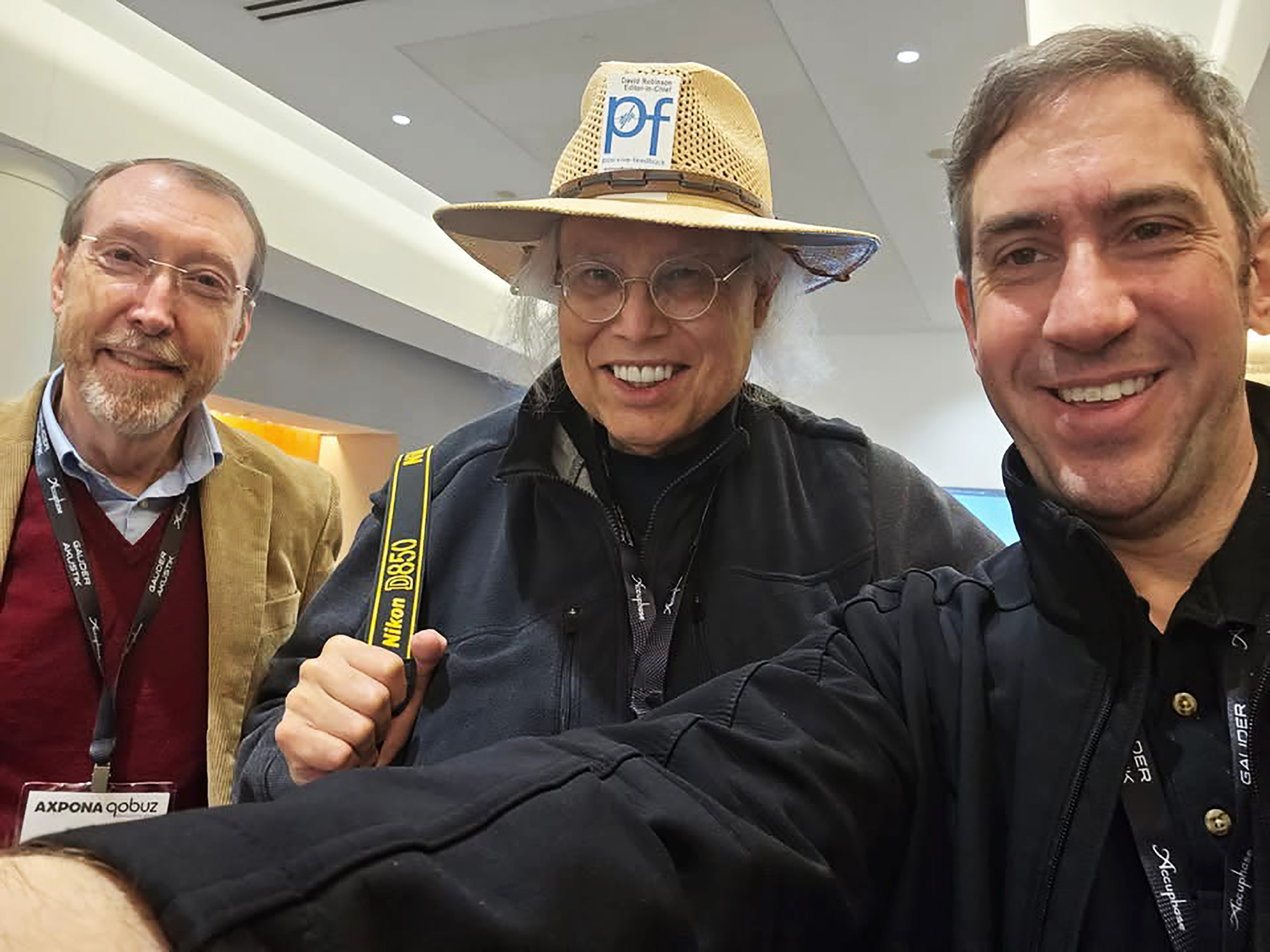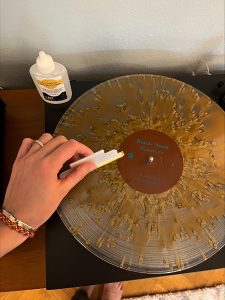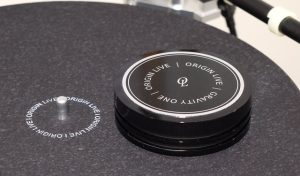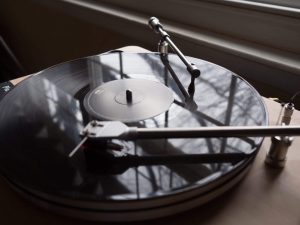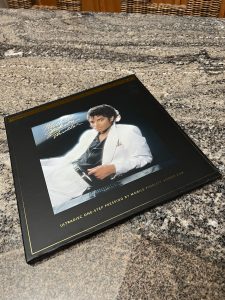Rush Paul is an audio friend of mine, who happens to share my passionate love for LPs and Lloyd Walker's wonderful Walker Audio Proscenium Turntable, arguably one of the very best reference turntables on this humble rock. He's deeply into getting the best out of his albums. Rush recently sent me his notes summarizing his experiences with DIY ultrasonic record cleaning. After reading his comments, I decided that they would make a thought-provoking addition to our "Audio Discourse" section, pro bono public.
Done. May it help those of our readers who are interested in the topic. Rushton's article follows below.
Dr. David W. Robinson, Ye Olde Editor
Over the past several months I've invested a fair amount of time exploring ultrasonic cleaning because I've fallen way too far behind in my record cleaning. With over 6000 LPs, I needed a faster way to clean than my trusted multi-step manual wet/vac cleaning process. That manual process got the best results I've ever found, but I was not keeping up with my collection and it is just painful to me to play a record that I've not cleaned.
In exploring ultrasonic cleaning, my hope was to find that I could complete multiple LPs in a single US cleaning cycle and greatly speed up my rate of cleaning records. My goals were to FIRST do no harm and then SECOND see how close I could get to the results of my manual cleaning regimen.
My past experiences with ultrasonic cleaning demonstrations were completely underwhelming. What I heard did not approach the excellence I was achieving with my multi-step wet/vac cleaning regimen. What I've learned, and now apply in my new ultrasonic cleaning regimen, are multiple elements to the cleaning process that must be used in combination to achieve the best possible results. And these results have far exceeded my expectations.
Credit where due: My results are the synthesis of a lot of work reported by others in a variety of online forums. I've certainly not come up with any of this on my own; I'm simply compiling elements that, when applied systematically in one cleaning regimen, give outstanding results. I've listed at the end of this report some of the online threads I've found particularly valuable.
Summary
I've now cleaned over 100 records using my new ultrasonic cleaning regimen and detergent solution for my tank. What I hear exceeds the quality that I've been able to achieve in the past with my multi-step manual wet/vac cleaning regimen, and this has surprised me given what I'd heard with ultrasonic cleaning demonstrations elsewhere.
The key characteristics that I'm hearing (using a 40kHz tank, DIY formulated detergent solution, 31-35 degree Celsius heating, approximately 3 revolutions in 10 minutes, double high purity water rinse, vacuum drying between rinses and filtering the tank water between each batch of LPs) are:
- Absolutely no audible damage to the grooves, no high frequency dulling or roll-off
- Dead silent background (on records not previously groove-damaged)
- Excellent reveal of transients, harmonic overtones and timbre
- A great sense of openness to the sonic image and soundstage
The critical elements to the process that makes for the improvements I'm hearing versus other rather non-compelling ultrasonic demonstrations I've heard in the past are:
- Using the right detergents/chemicals the US tank solution—this is critical.
- Tank water temperature in the 31-35 degree Celsius range (heat is your friend, just not too hot).
- Double high purity water rinse and vacuum dry.
- Tank water kept scrupulously clean by filtering between batches and then completely dumping and refreshing the tank solution after 30-50 records, depending on how dirty the records were.
- Rotation time and speed in the tank; 3 revolutions in 10 minutes is working well.
Cost
total investment (including ultrasonic tank, device to rotate multiple records in the tank, vacuum machine for drying the records, chemicals for mixing your tank detergent/surfactant solution) can be under $1,400.
Equipment
Here's what I'm using for a setup that cleans four records at a time…
- Trusonik 10L 40kHz Ultrasonic Tank, with drain (new on eBay for $199)
- Vinyl Stack Spin Kit for rotating up to 4 records at a time in the tank, variable speed, will work with any tank with the required minimum dimensions ($325 with the optional 4 LP spindles). Video demo: https://www.youtube.com/watch?v=9ukvU3I_AWI
- Vacuum record cleaning machine - I use a VPI which I already had; a new model HW-16.5 sells for $700; handheld vacuum wands for use with portable vacuums are also an alternative.
- Chemicals for mixing your own cleaning solution and sufficient for hundreds of records ($50-$60 depending on type and source, see recommended formula below).
- High purity water, available in bulk for as little as $0.39 per gallon.
Why only four records at a time? Why not eight or more? It depends on the size of your ultrasonic tank. With a 10L tank, records can be spaced an optimal 1" apart and not overload the capacity of the tank. Some are trying to fit records more tightly than 1" apart, but my research suggests strongly that they are overloading the cleaning capacity of their ultrasonic tank. If you want to do eight records at a time, get a 15L tank. If three or fewer records at a time works for you, you can get by with a 6L tank.
Why not use a 60kHz or higher frequency tank? Using a 60-69kHz tank should be fine; it might even be ideal given some of the technical data. I've not personally tested the difference, but Harry Weisfeld has. He bought one of each for testing and reports that he CANNOT HEAR any difference in the results. (See his report in the VPI forum thread.) I know I'm getting great results with my 40kHz tank and it's about $400-600 less expensive than any of the 60kHz tanks I could find. I'm also convinced that a 40kHz tank does no harm to the vinyl. It's the frequency tank used in a number of commercially sold ultrasonic record cleaning machines and I've not seen any reports of problems.
What brand ultrasonic tank? Be careful in buying a decent quality ultrasonic tank. Some people report disappointing results only to find that their ultrasonic tank is underperforming because of inadequate design and parts quality. But, cost is not the only indicator of quality. There are inexpensive ultrasonic tanks being sold that are still good quality. Check the brand and do some research. In the U.S., many people are having good results with the Sonix brand. My Trusonik tank is made in China but seems well built and many people have used this brand now for a number of years with good results. A small manufacturer in South Carolina is building excellent 40 and 69kHz tanks under the Vibrato LLC name (but lacks a drain).
Cleaning Solution for Tank
The cleaning fluid in your tank is critical. Many people try to use only water, or water and some isopropyl alcohol, or a bit of Photo-Flo, or a bit of clear dishwashing solution – NO, NO, NO. You will not get the best results. Ultrasonic cleaning is not the magic by itself. The cleaning solution is the magic. The ultrasonic cavitations are just your gentle scrub brushes to help dislodge the contaminants that the cleaning solution is breaking up.
Use a detergent/surfactant meant for the purpose. This means one of the Tergitol variants as recommended by the Library of Congress in its record cleaning preservation formula and by the Canadian Conservation Institute. So, this is: Tergitol S-15-7 (LOC); or a combination of Tergitol S-15-3 and S-15-9 in a 50/50 proportion (CCI); or Triton X-100 (another Tergitol variant).
Also, add a quat (short for quaternary ammonium cation) that will provide antimicrobial properties and strong antistats. The antimicrobial is for longer term storage of your solution and cleanliness of your tank, recycling pump and filtration. The antistats will reduce static on your records. It just so happens there is an excellent commercial cleaning solution that formulated principally of quartz and is available from both Amazon and Staples (of all places. It's called Hepastat 256 and it's sold for hospital and office cleaning services. For an excellent discussion, read the AudioKharma post from an audiophile chemist who recommends this Hepastat ingredient that I've included in my formulation.
Formula for Tank Cleaning Solution
Largely derived from the information provided the chemist posting variously as guest110, vince1 and phantomrebel in the AudioKharma thread Record cleaning- you're doing it wrong!, my cleaning fluid formula for ultrasonic record cleaning today is:
0.13% Tergitol S-15-3 and S-15-9 in a 50/50 proportion (or use Triton X-100 as a simpler alternative)
0.10% Hepastat 256 (a 1:1000 dilution)
5.00% isopropyl alcohol (using 91% grade)
As the chemist in that AudioKharma thread has recommended, I'm finding it useful to premix the Tergitols with some alcohol and to make up enough in advance for several US tank refills. In my case, I'm making up a 4 oz bottle's worth of solution (about 118 ml) that will give me enough concentrated mix for four 2-gallon US tanks when I add the additional alcohol as part of setting up the tank. In milliliters this solution is:
40.00 ml Tergitol
30.00 ml Hepastat 256
48.00 ml Isopropyl to top out the bottle at 118 ml
118.00 ml total as a base solution
This combination neatly fits into one the those readily available 4 oz (118 ml) blue storage jars and is enough to mix up four 2-gallon US tanks using 29.5 ml of the combination per tank and then adding another 400 ml of 91% isopropyl to each tank to reach the 5% alcohol concentration.
Sources for chemicals used in the formula above: It is difficult to purchase the Tergitol S-15-7 (LOC recommendation) unless you are a laboratory or have someone at a lab who will order it for you. However, the other ingredients are readily available for ordering online:
Tergitol S-15-3 and S-15-9 – Talas in Brooklyn NY sells and ships to individuals.
See: http://talasonline.com/Tergitol-15-S-3-and-15-S-9
Triton X-100 – also available from Talas or from Amazon. This is an alternative to the Tergitol variants above and I'm told it will work well, but I've not tested it.
See: http://talasonline.com/Triton-X-100
Hepastat 256 – Staples online for delivery to your local store for pickup has the best price I've found. See: http://www.staples.com/Brighton-Professional-Hepastat-256-Disinfectant-Cleaner-Quick-Mix-1-Gallon/product_760086
95% Ethyl Alcohol (Ethanol) – Reagent grade, used in final rinse as discussed below. Be careful what has been used to denature the Ethanol so it can be sold legally without payment of an alcoholic beverage tax. Look for either methanol or isopropyl as the denaturing additive, not something else that may harm the vinyl. Available from Amazon. See: https://www.amazon.com/gp/product/B01ETU4BB0
91% Isopropyl Alcohol – many pharmacies sell it. Walmart has the best price I've found at $2.58 per quart.
Storage and handling of the chemicals: The Tergitol is expensive enough to want to preserve as long as possible and it won't keep indefinitely if bacteria gets into it. So, good practice is to keep all the chemicals and mixing containers as clean and sanitary as possible. Most of us can't duplicate sterile storage conditions, but we can improve things. Here's what I'm doing;
- The 100% Tergitols – stored in sealed containers in the refrigerator to reduce any risk that some bacteria that likes to feed on proteins will decide to start growing in the storage bottles. Also, I only draw from the 100% Tergitol bottles using a disposable sterile pipette to minimize any risk of getting bacteria into the storage container.
- The 100% Hepastat 256 – stored at room temperature, as is the isopropyl alcohol.
- The base solution mix – stored in sealed jar at room temperature since it has the Hepastat 256 in it that will prevent any bacteria from growing.
Water Quality and Sources
For mixing up the tank cleaning solution, any good quality distilled or reverse osmosis filtered water is probably fine. But I prefer to use water as close to Type 1 Reagent Grade water as I can find at a low cost for mixing this tank solution. For my two rinse steps, I do use Type 1 Reagent Grade water. DON'T STINT ON GETTING HIGH PURITY WATER! It is the next step in removing contaminants from the record surface because the high purity water binds those contaminants readily and allows them to be removed as the water is removed in your vacuum drying step. High purity water is critical to both ultrasonic cleaning and the multi-step wet/vac cleaning processes. So, this is nothing new just for ultrasonic cleaning. Good sources of excellent high purity water are:
- Whole Foods Market bulk dispensed deionized water for $0.39 per gallon is near Type 1 Reagent Grade water. The company that provides and maintains these dispensers in the Whole Foods Markets in my area is Fresh Pure Waters and they describe their filtration process at their website. They also provide and maintain bulk water dispensers in other organic food stores in the U.S. and Canada.
- Fish and Aquarium stores that specialize in salt water or coral growing aquarium supplies. I'm told the salt water aquarium stores often have high quality multi-stage filtration systems that generate near Type 1 Reagent Grade water.
Filtering the Solution in the Tank
The tank solution needs to be kept scrupulously clean. Remember, all of the contaminants coming off our records are being suspended in that tank solution. But dumping a re-filling the tank with cleaning solution with each batch of records is not very economical or time efficient. So, use a filtering process in between batches of records. I've set up a small in-line pump with filter canister containing a 1 micron polyester filter. My setup follows a design posted by bbftx on the diyAudio forum, with some minor adjustments due to parts availability.
Video here: https://www.youtube.com/watch?v=NLHGLx3qrvY
Discussion here: http://www.diyaudio.com/forums/analogue-source/218276-my-version-ultrasonic-record-cleaner-13.html#post3215289
Step-by-Step Cleaning Process
My cleaning regimen now looks like this:
- Mix 2 gallons of cleaning solution for the tank using the formula above, add to tank
- Degas the water in the tank by running ultrasonics for 10 minutes while also turning on tank heater to bring water temperature up to 30 – 35 degrees Celsius. Do this before adding records.
- Mount records to be cleaned on spindle and attach the spindle to the Spin Kit rotating at 3 revolutions over 10 minutes in the tank water. Use tank timer.
- Remove record spindle and dismount records one at a time for rinsing.
- Rinse on vacuum cleaning platform (e.g., a VPI HW-16.5) using a highly pure water. Vacuum dry.
- Re-rinse a second time using the Final Rinse Water described below and vacuum dry.
- Set record aside to finish air drying any remaining moisture not removed by the vacuum, then place in clean inner sleeve.
Final Rinse Water
I do a double rinse. The first rinse is with high purity water sourced in bulk. But the second rinse is special. The second rinse is with Type 1 Reagent Grade water to which I've added a small amount of Reagent Grade 95% Ethyl Alcohol (Ethanol) to make up not more than 3% of the rinse solution by volume (3 parts to 100). The addition of the Ethanol makes a subtle but consistently heard improvement in the cleaning results as compared to the Type 1 Reagent Grade water by itself. The Ethanol is a surfactant so the final rinse can actually get into the record groove. It is a further cleaning/degreasing agent. It readily binds with anything remaining in the grooves. And it aids in drying.
Why use Ethanol rather than Isopropyl? I use the Ethanol because I've been told that it is a more volatile alcohol than Isopropyl and even more readily binds with other molecules due to having one less carbon atom. Hey, I'm just repeating like a parrot here.
Online Discussions that I Relied on in My Research
- AudioKharma – Record cleaning- you're doing it wrong! – Started by an audiophile chemist who shares what chemicals are likely in the commercial cleaning products we've used, what chemicals and detergents we should be using, and WHY. Look for posts by the chemist under the various monikers: guest110, vince1, phantomrebel (long story dealing with trolls as to why the several monikers). Much of the focus is on cleaning solutions for manual cleaning processes, but the posts in 2016 have included a lot of discussion for applying these solutions to ultrasonic cleaning. The recommendations from the chemist in this thread were my sources for the formula I'm now using (as I've described above).
- diyAudio – My version of an Ultrasonic Record Cleaner – Started by bbfxt who is a tremendously creative and talented tinkerer. Largely focuses on diy solutions for adding multiple record rotation capability to a commercially purchased ultrasonic tank, not how to build the ultrasonic tank itself. Lots of good examples and contributions from many contributors, but principally from bbftx.
- VPI Forums – Record cleaning – Started by Harry Weisfeld to share his experience with ultrasonic cleaning beginning with his doubts about it rolling off high frequency information and then with changing with Harry's conviction that ultrasonic was not rolling off high frequencies "when done right." Good information shared by the man himself. His conclusions are what convinced me to forge ahead in this exploration. Over the past two years, this thread has taken on a life of its own with very robust contributions from many music listeners.





